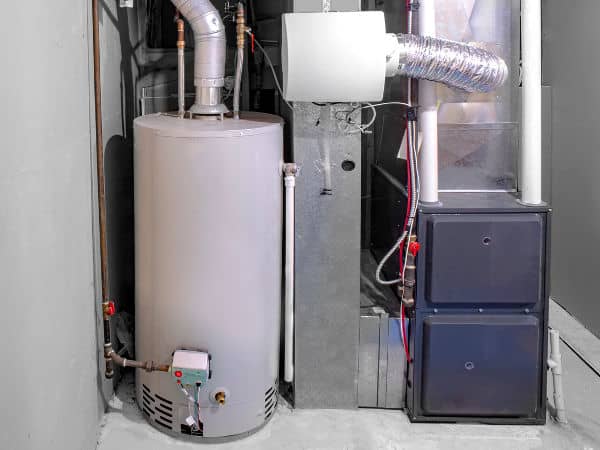Key Tips on Maintaining Your Home's Hot Water SystemEasy Methods to Maintain Your Home's Hot Water System Properly
Key Tips on Maintaining Your Home's Hot Water SystemEasy Methods to Maintain Your Home's Hot Water System Properly
Blog Article
This great article in the next paragraphs involving Tips on Maintaining a Water Heater is particularly captivating. Read on and draw your own results.

Hot water is necessary for daily convenience, whether it's for a revitalizing shower or washing meals. To guarantee your hot water system runs successfully and lasts longer, routine upkeep is key. This short article offers functional pointers and insights on exactly how to keep your home's hot water system to avoid interruptions and pricey repair work.
Intro
Keeping your home's hot water system may seem complicated, however with a couple of simple steps, you can guarantee it runs smoothly for many years to come. This guide covers everything from comprehending your hot water system to do it yourself upkeep tips and knowing when to contact specialist help.
Significance of Preserving Your Warm Water System
Normal upkeep not only extends the life expectancy of your hot water system but likewise guarantees it operates efficiently. Overlooking maintenance can result in reduced effectiveness, greater power costs, and also premature failure of the system.
Signs Your Hot Water System Requirements Maintenance
Knowing when your hot water system needs focus can prevent major issues. Look out for signs such as inconsistent water temperature, strange noises from the heater, or rusty water.
Understanding Your Hot Water System
Before diving into upkeep jobs, it's valuable to understand the standard parts of your warm water system. Normally, this includes the water heater itself, pipes, anode rods, and temperature controls.
Monthly Maintenance Tasks
Normal month-to-month checks can aid capture small problems before they escalate.
Purging the Hot Water Heater
Flushing your water heater gets rid of debris build-up, enhancing effectiveness and extending its life.
Checking and Replacing Anode Rods
Anode poles protect against rust inside the storage tank. Examining and replacing them when broken is critical.
Evaluating and Changing Temperature Settings
Adjusting the temperature level setups guarantees optimal efficiency and safety and security.
DIY Tips for Upkeep
You can do several upkeep tasks on your own to keep your warm water system in top problem.
Looking for Leakages
Frequently evaluate pipelines and connections for leaks, as these can bring about water damage and higher costs.
Evaluating Pressure Alleviation Valves
Evaluating the stress relief valve guarantees it functions appropriately and stops too much pressure buildup.
Shielding Pipes
Shielding hot water pipes minimizes warm loss and can conserve energy.
When to Call a Professional
While do it yourself maintenance is useful, some issues need specialist competence.
Facility Issues Needing Specialist Help
Instances consist of major leaks, electric problems, or if your water heater is regularly underperforming.
Regular Professional Upkeep Advantages
Professional upkeep can consist of thorough assessments, tune-ups, and making certain compliance with security criteria.
Final thought
Normal maintenance of your home's warm water system is essential for effectiveness, long life, and cost financial savings. By following these ideas and recognizing when to look for professional assistance, you can guarantee a trustworthy supply of hot water without unforeseen disturbances.
Water Heater Maintenance Tips
Test the TPR Valve
Shut off the power and the cold-water supply valve. Place a bucket under the pipe connected to the temperature-pressure-release (TPR) valve on the top or side of the tank. (This valve opens if the tank pressure gets too high.) Lift the valve’s tab to let some water out, then let go. If water keeps flowing, drain the tank partway, unscrew the old valve with a pipe wrench, and install a new one. Check the Anode Rod
Put a hose to the tank’s drain cock and let out a few gallons of water. Now fit a 1 1/16-inch socket onto the rod’s hex head on top of the heater (or under its top plate) and unscrew the rod. If it’s less than ½ inch thick or coated with calcium, buy a new one, wrap its threads with Teflon tape, put it back in the tank, and tighten securely. Use this segmented rod if headroom above the tank is limited. Drain the Tank and Wash Out Sediment
Drain the remaining water in the tank into the bucket, then stir up the sediment on the tank’s bottom by briefly opening the cold-water supply valve. Drain and repeat until clean water comes out of the hose. Close the drain cock, refill the tank, and turn its power back on. Adjust the Temperature
Find the temperature dial on the side of the tank and unscrew its cover. Adjust the dial to 120 degrees using a flathead screwdriver. For every 10 degrees the temperature is lowered, you can expect to save up to 5 percent in energy costs. Turn the water heater off or the thermostat down to its lowest setting if you plan to be away from home for more than three days. Insulate the Pipes
Buy some self-sticking 3/8-inch-thick foam pipe insulation that matches the pipes’ diameter. Slide the foam over the hot-and cold-water pipes as far as you can reach. Insulating the cold-water pipe prevents condensation in summer. Peel the tape and squeeze the insulation closed. If the pipe is 6 inches or less from the flue, cover it with 1-inch-thick unfaced fiberglass pipe wrap. https://www.thisoldhouse.com/plumbing/21016402/how-to-maintain-a-water-heater

Hopefully you enjoyed reading our excerpt on What Kind of Maintenance Do Water Heaters Need?. Many thanks for taking the time to browse our article post. Sharing is good. One never knows, you may just be doing someone a favor. I thank you for reading our article about Water Heater Maintenance Tips You Can't Afford to Forget.
Call Today Report this page